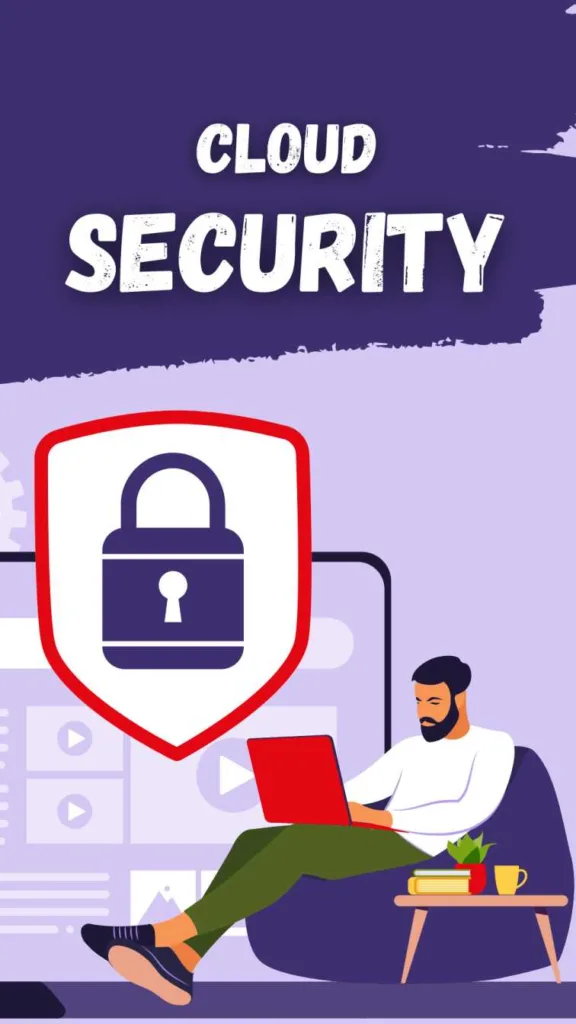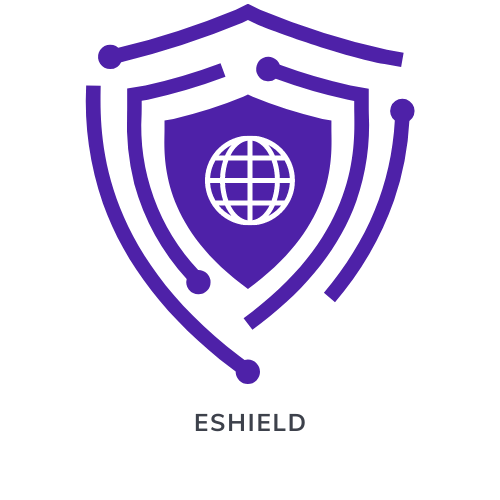
INTRODUCTION
In recent years, Cloud computing adoption has grown tremendously, providing businesses and organisations with the flexibility, scalability, and cost-efficiency they require to prosper in today’s digital environment. However, this convenience comes at the expense of an increased risk of cyber threats and data breaches, especially when sensitive data is involved.
Any organisation that employs cloud-based services must prioritise the security of sensitive data on the cloud. Data breaches, whether involving personal information, financial data, or intellectual property, can result in severe reputational harm, financial losses, and even legal implications.
Fortunately, Businesses can use numerous best practises to secure sensitive data in the cloud. Organisations may ensure that their data is safe and secure by employing these practises, while still reaping the benefits of cloud computing.
This blog will look at some of the best practises for protecting sensitive data on the cloud. We will look at the challenges and hazards of storing data in the cloud, as well as the need of a solid security plan and practical advice and solutions for securing sensitive data. This blog will give you with essential ideas and strategies for protecting your sensitive data in the cloud, whether you are a small business owner or an IT specialist
Understanding the Risks of Storing Sensitive Data in the Cloud
- Data loss is one of the most common cloud security issues. It is often referred to as data leakage. Data loss occurs when data is destroyed, corrupted, or rendered unreadable by a user, software, or application. In a cloud computing context, data loss occurs when our sensitive data is in the hands of someone else, one or more data elements cannot be used by the data owner, a hard disc fails, and software is not updated.
- Misconfigured cloud services: Unauthorised access to sensitive data can come from incorrectly configured cloud services such as storage buckets, databases, and virtual machines. This can occur as a result of a lack of security best practises, such as failing to enable encryption, using insecure access control settings, or using default passwords.
- Insecure APIs: APIs are used by cloud apps and services to communicate with one another, which can be exploited if they are not developed with security in mind. Because attackers can utilise insecure APIs to access, edit, or destroy sensitive data, they can lead to data breaches.
- Shared infrastructure: To cut expenses and improve scalability, cloud companies frequently use shared infrastructure. However, this might pose security problems because data from one tenant can be viewed by another if the provider’s security controls are poor.
- Insider threats: Insiders with legitimate access to cloud services can compromise data intentionally or accidentally by abusing their rights or sharing login credentials.
- Malware: Malware attacks on cloud systems can also harm data by exploiting system weaknesses or human errors. Malware can be spread by phishing campaigns, malicious files, or unpatched software.
- Lack of visibility and control: Customers may lack visibility and control if cloud providers manage the infrastructure and security of cloud services. This can make detecting and responding to security incidents challenging for organisations.
- Third-party risks: Third-party services and vendors are frequently used in cloud infrastructure, which can pose extra vulnerabilities. If these services or vendors are not properly secured, they can open up security holes for attackers to exploit.
A cyber incident will directly consume a company’s resources, increasing the cost of conducting business. In 2022, the global average cost of a data breach will be $4.35 million, while the figure in the United States will be more than double, averaging $9.44 million.
Creating a Strong Security Strategy
In today’s increasingly digital environment, developing a robust security plan is critical for ensuring the integrity, confidentiality, and availability of sensitive information. A solid security plan entails a systematic and proactive approach to risk identification, assessment, and mitigation. It starts with a thorough assessment of an organization’s assets, such as data, systems, networks, and physical infrastructure, in order to identify potential vulnerabilities and threats. This evaluation serves as the foundation for creating and executing a layered security architecture that includes technology protections like firewalls, encryption, and intrusion detection systems, as well as organisational rules, employee training, and incident response plans. A solid security strategy also includes constant monitoring and testing in order to detect and resolve emerging threats and vulnerabilities. A strong security plan helps manage risks, preserve important assets, and establish confidence with customers, partners, and stakeholders by prioritising security at all levels of an organisation.
Implementing Data Encryption
Data encryption is a critical step in maintaining the confidentiality and integrity of sensitive data. Encryption is the process of employing encryption algorithms and keys to turn data into an unreadable format known as ciphertext. By encrypting data, it stays incoherent and unusable even if intercepted or accessed by unauthorised individuals without the associated decryption keys. Data encryption requires the selection of appropriate encryption algorithms and key management practises that adhere to industry standards and legal regulations. This includes elements such as the strength of encryption methods, key lengths, and encryption key protection. Encryption can be used at several levels, including data at rest, data in transit, and data in use.
Access Management and Authentication
Access management and authentication are critical in safeguarding digital systems and ensuring that only authorised users have access to sensitive information. Controlling and monitoring user access rights and permissions is part of access management, whereas authentication confirms the identity of those seeking access. Establishing user roles and giving appropriate access privileges based on job duties and the principle of least privilege is the first step in effective access control. This guarantees that users only have access to the resources they require for their work, reducing the danger of unauthorised access. Passwords, biometrics, and multi-factor authentication (MFA) add an additional layer of protection by authenticating the user’s identity before providing access.
Regularly Monitoring and Updating Security Measures
In today’s fast changing digital landscape, it is critical to regularly review and update security measures. Because cyber threats are becoming more sophisticated, organisations must be attentive and proactive in securing their sensitive data and systems. Businesses can discover and respond to potential security breaches quickly by having a sophisticated security monitoring system. This includes monitoring network traffic, system records, and user activity in real time to detect any unusual or malicious behaviour. Furthermore, all software and hardware components should receive frequent security updates and patches to address any known vulnerabilities and guarantee that the most recent security protections are in place. Furthermore, all software and hardware components should receive frequent security updates and patches to address any known vulnerabilities and guarantee that the most recent security protections are in place. Organisations can stay one step ahead of potential threats and preserve their valuable assets while preserving the trust of their customers and stakeholders by regularly analysing and improving security measures.
Disaster Recovery and Business Continuity Planning
Disaster recovery and business continuity planning are critical components of organisational resilience in the face of unanticipated disruptions or disasters. Such strategies are intended to reduce the impact of unfavourable occurrences, such as natural disasters, cyberattacks, or system failures, on a company’s usual operations. A complete disaster recovery plan includes identifying potential risks, assessing the effects of those risks, and implementing solutions to minimise downtime and data loss. This includes establishing off-site data storage facilities, implementing backup and recovery systems, and conducting frequent testing and drills to confirm the plan’s performance. Business continuity planning, on the other hand, is concerned with maintaining vital business functions during and after a disaster, allowing the organisation to continue serving and meeting its customers’ needs. It entails identifying critical employees, resources, and procedures, as well as establishing alternate work sites and laying out communication methods. Organisations may considerably decrease the impact of disruptions and ensure the seamless and prompt resumption of activities by proactively designing and routinely updating disaster recovery and business continuity plans, thereby maintaining their reputation and minimising financial losses.
Compliance and Regulatory Requirements
Compliance and regulatory standards are critical in ensuring that firms operate ethically, responsibly, and legally. Governing organisations set specialised restrictions and standards on various industries, such as financial regulations, data protection laws, environmental regulations, and labour laws. Understanding and complying to these standards entails understanding and adhering to rules, procedures, and controls to ensure legal and ethical business practises. Organisations must keep up with the changing regulatory landscape since noncompliance can result in serious consequences such as fines, penalties, legal actions, and reputational harm. Maintaining a strong compliance programme entails performing frequent audits, risk assessments, and internal monitoring to detect and close any compliance gaps. Companies must also spend in staff training and awareness programmes to foster a compliance culture throughout the workforce. Businesses can demonstrate their commitment to operate with integrity, defend themselves from legal and financial risks, and keep the trust of their customers and stakeholders by prioritising compliance and regulatory obligations.
Choosing a Secure Cloud Service Provider
Choosing a safe cloud service provider is an important decision for businesses who want to get the benefits of cloud computing while protecting their data and equipment. Several criteria should be addressed while evaluating potential suppliers to ensure adequate security measures. First and foremost, the provider must have a solid track record and reputation for security, as evidenced by certifications and compliance with industry standards such as ISO 27001 and SOC 2. They should also use strong encryption techniques to protect data both at rest and in transit. To prevent unauthorised access, the provider should also provide sophisticated access controls, such as multi-factor authentication and granular user permissions. To discover and address any vulnerabilities, regular security audits, vulnerability assessments, and penetration testing should be done. In addition, it is critical to evaluate the provider’s incident response and disaster recovery capabilities to enable timely remediation and business continuity in the event of a security breach or disruption. Finally, analysing the provider’s data privacy policies and practises, including data location and jurisdiction, can assist in assuring compliance with applicable privacy legislation. Businesses can select a secure cloud service provider that satisfies their individual security requirements and helps avoid any risks connected with cloud adoption by carefully analysing these criteria.
Training and Education for Employees
Employee training and education are critical components of keeping a secure and resilient organisation in today’s digital landscape. Employees can be the first line of defence or inadvertent entry points for criminal actors as cyber threats evolve. Businesses can provide their staff with the information and skills needed to recognise and respond effectively to possible security hazards by delivering comprehensive training programmes. This involves increasing employee awareness of popular attack vectors such as phishing emails and social engineering, as well as training staff on recommended practises for setting strong passwords, securely handling sensitive data, and responsibly using business resources. Employees can be kept informed and engaged by regular training sessions and updates on evolving dangers and security practises. Furthermore, organisations should build a cybersecurity awareness culture by encouraging employees to report suspicious activity as soon as possible and promoting a sense of shared responsibility for maintaining a secure environment. Businesses can empower their staff to be proactive in securing sensitive information, minimising potential risks, and contributing to the overall security posture of the organisation by investing in continuing training and education efforts.
Conclusion:
Implementing best practises for securing sensitive data in the cloud is critical for organisations seeking to safeguard their precious assets while maintaining consumer trust. First and foremost, choosing a reliable and secure cloud service provider that has comprehensive security measures, certifications, and compliance with industry standards is critical. Using robust encryption mechanisms and access controls, as well as performing regular security audits and testing, helps to reduce risks. Disaster recovery and business continuity planning enable organisations to maintain operations and recover quickly amid disruptions. Legal and ethical practises are ensured by adhering to regulatory laws and industry norms. Furthermore, educating and training employees about cybersecurity risks and best practises empowers them to be active participants in creating a safe environment. Businesses can improve data protection, decrease risks, and efficiently preserve sensitive information by including these best practises into their cloud security plan.


